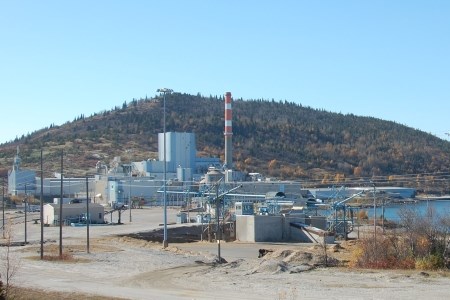A Toronto biofuel company has innovative plans to use Northern Ontario woody biomass to make a specialty pellet that European power producers may be eager to snap up.
Protocol Biomass wants to set up shop at the former Marathon Pulp mill site and install a roasting process to make torrefied wood pellets that are growing in global popularity as a coal substitute.
“We believe we are creating a bonafide coal replacement,” said Tom Logan, president of Protocol Energy, a privately held parent company with a regional subsidiary aimed at establishing the so-called ‘black’ pellet plant on the north shore of Lake Superior.
His business plan for the $100-million project has been making the rounds in the Toronto capital market. But the company and the Town of Marathon kept it under wraps for a year. They only decided to go public this winter in an attempt to prod Queen’s Park into speeding up the government’s competitive wood supply competition.
Besides creating a pellet-making operation, the company proposes converting biomass into energy by firing a 17-megawatt co-generation unit at the mill site to provide heat and power to the plant and the town centre with a district heating grid connecting the hospital, municipal offices, a shopping mall and other commercial users.
“While we make dog food, we’re going to eat it ourselves,” said Logan.
Besides the abundance of wood fibre in the area, a major drawing card is the closed pulp mill, which shut down in 2009 with the loss of 200 jobs.
The brownfield site has since undergone considerable environmental cleanup. While forestry giant Tembec and the Ministry of Environment negotiate a settlement agreement, a court-appointed receiver is working with the town’s economic development department to find a new buyer for the property.
Logan wants to have the land and the mill assets in his possession by March. He likes the deep water dock and nearby rail access.
“From an outbound logistics perspective, it’s a very excellent location.”
He’s eyeballing potential customers at Ontario Power Generation, power producers in the U.S. Midwest, and especially Europe, where pellets are co-fired at dedicated biomass and coal plants.
“We would like to think we can build a product that they would want.”
It’s always been tricky economics to ship pellets overseas, but torrefied pellets can be sold at a higher price than conventional ‘white’ pellets.
The Marathon operation’s size would be scalable depending on the amount of fibre available. It would start out producing 100,000 tonnes of pellets a year, creating 75 plant jobs. Later on, it could ramp up to more than 500,000 tonnes and employ as many as 125.
Logan also intends to create a “biomass campus” to research next-generation biofuels in partnership with an undisclosed “major Canadian university.”
Torrefied pellets look and burn like coal.
Wood residue is roasted through an oxygen-free pyrolysis process that creates a charcoal similar to coking coal used in the steel industry.
It can be pulverized and made into pellets.
Logan said it has the same energy value as coal and is hydrophobic, meaning it can be stored outside for long periods without sucking up any moisture.
Since the pellet can be shipped, stored, pulverized and burned like coal, Logan said there’s no need for massive fuel handling refurbishments at power plants.
“I’ve never seen the product before but it looks pretty interesting,” said Marathon mayor Rick Dumas. “It’s biomass, so it’s green.”
Protocol intends to work hand-in-hand with a community joint venture of Marathon, Manitouwadge and Pic River First Nation who are angling to manage the Big Pic forest unit and sell Crown wood to Protocol.
But the whole project hinges on the outcome of the provincial wood supply competition process which would release 11 million cubic metres of unused or underutilized wood across Ontario to interested companies and community groups. Logan said they can’t go to financiers or secure customers without a long-term guarantee of wood supply.
“The credit worthiness of anybody in this marketplace is demarked by a long-term fibre contract.”
The government sent out its first batch of six offers in late November for prospective proponents to accept within 30 days.
Northern Development, Mines and Forestry Minister Michael Gravelle is hopeful of making announcements shortly.
“I will be signing more conditional offers very soon so we need to give the companies provided with the offers (some) time to accept them, but the process is going to move forward far more quickly very soon.”
Protocol is one of two frontrunners interested in the mill property and the access to wood. The other is California fertilizer maker Rentech, which wants to convert biomass into aviation fuel.
Dumas said both companies are a good fit for Marathon.
“At one time, we had five sawmills working in our region, and now we have one sawmill running. There’s enough fibre out there for both of these facilities to be set up here and offer economic benefits for the whole region.”
www.marathon.ca
www.protocolenergy.com




